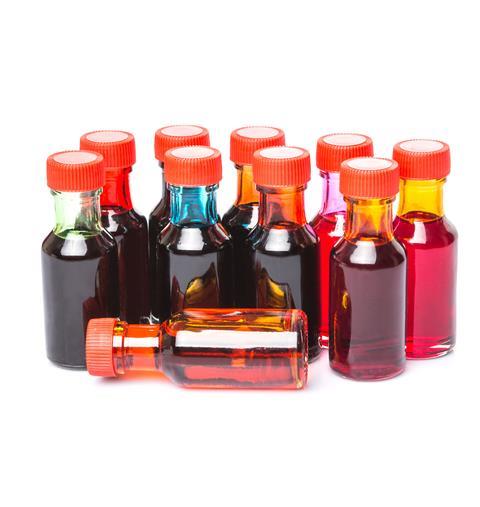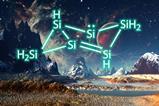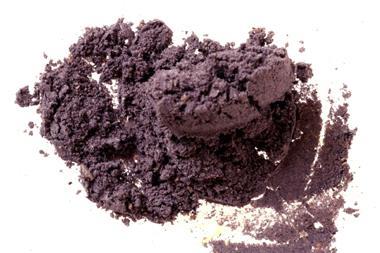Meera Senthilingam
This week beware the E numbers, and Brian Clegg is highlighting one in particular.
Brian Clegg
The worst insult that can be hurled at processed food in the UK is that it is 'full of E numbers.' These innocent European Union designators for food additives have become bogeymen for millions of parents. It doesn't matter that plenty of E numbers are natural or harmless - take, for instance E150a, better known as caramel, E290, the fizz in your fizzy drink, carbon dioxide, or E300, the anything-but-evil vitamin C. The fact remains that everyone just 'knows' that E numbers are bad for you.
To be fair, there is an element of truth in this. Some E numbers are responsible for genuine problems, and the best known of these is probably E102, tartrazine. This is a bright yellow azo dye. Azo compounds are of a very general form with a double bonded pair of nitrogen atoms at their heart. Each nitrogen is linked to a different organic group and this structure is ideal to enable delocalised electrons. These are electrons that aren't associated with individual atoms. Delocalisation gives molecules a tendency to have a strong interaction with light, and hence can have a powerful colouring effect.

Tartrazine has been widely used as a food colouring in everything from sweets and orange drinks to cereals and marmalades. It has traditionally been used in food, in part because it is cheap to make, but also because it is significantly more stable than most natural food colourings. However, there is some evidence for two problems that it may cause. A relatively small number of people appear to have an intolerance to the dye, producing a reaction that is similar to an allergy (though the mechanism for this is not clear). This manifests itself not as a direct allergic reaction to tartrazine, but rather an increase in allergic reaction to other substances. More famously, at least two studies have suggested that tartrazine and a number of other additives may contribute to hyperactivity in children.
There are problems with these studies, and there have been contradictory results in what is inevitably a very subjective field. How do you systematically and objectively measure hyperactivity and isolate its cause? Tartrazine hasn't been shown to cause problems in isolation, but where studies have detected problems it has tended to be as a result of a cocktail of additives that included azo-based food colouring like tartrazine. However, despite the small number of studies, the reaction has been, quite naturally, to avoid the use of tartrazine where possible, particularly in food and drink

The legitimate concern about tartrazine should not mean that we forget the importance of the azo dyes, though. For millennia, natural dyes were the only options available. Although some of these are excellent, many are expensive, involve some rather dubious ingredients (such as cochineal's famous sourcing from crushed insects), or are rather difficult to get hold of. Others don't bind particularly well to cloth, or are unsuitable for human consumption.
The overthrow of the natural dye began with William Perkin's accidental discovery of mauveine, or aniline purple. Perkin was trying to produce an artificial anti-malarial drug, but instead came up with a dye that could be substituted for one of the rarest and most expensive of the natural colours, Tyrian purple, a substance produced from sea snails and historically used by kings and emperors.
Now, though, the most common type of dyes are azo dyes like tartrazine, accounting for over 60 per cent of dye manufacture. There seem to be two big selling points that account for their popularity - they are cheap to make, and they produce strikingly bright colours, significantly brighter than the next most popular type of dye, the anthraquinones. In principle, azo dyes could be produced in every colour of the rainbow, and there have been some developments of blue dyes, but they are particularly easy to make in colours like red, orange and yellow.

The popularity of azo dyes probably also reflects their flexible nature. The component molecules are widely available and cheap, making a kind of dyestuff construction kit that can produce a wide range of dyes. The chemical reaction is also easy to scale up to industrial production and takes place in water, rather than more expensive and hazardous solvents.
It's easy to have a knee-jerk reaction if you have children and see that worrying E number in the contents. But we shouldn't forget that the azo dyes are a major contributor to the colourful world we enjoy.
Meera Senthilingam
So, good to look at, but maybe not consume. That was science writer Brian Clegg with the colourful but hyperactive chemistry of tartrazine. Now, next week, a compound aiding the invasion of our natural enemies.
Josh Howgego
Just as the immune system uses the recognition system to try to identify invaders, bacteria and viruses also use this system to locate their host cells or tissues.
This is where we meet neuraminic acid again, because neuraminic acid is one of the most important sugar markers found in the human body. Viruses like the influenza A strain H1N1 - otherwise known as swine flu - have proteins called haemagglutinins on their surface which bind to neuraminic acid derivatives on the surface of our own cells.
Now scientists understand a little bit about how this recognition process works they are beginning to attempt to use this knowledge to stop infections before they can even start. Well, that's the ultimate goal anyway.
Meera Senthilingam
And to find out just how scientists are trying to reach this goal, join Josh Howgego in next week's Chemistry in its element. Until then, thank you for listening. I'm Meera Senthilingam.


















No comments yet